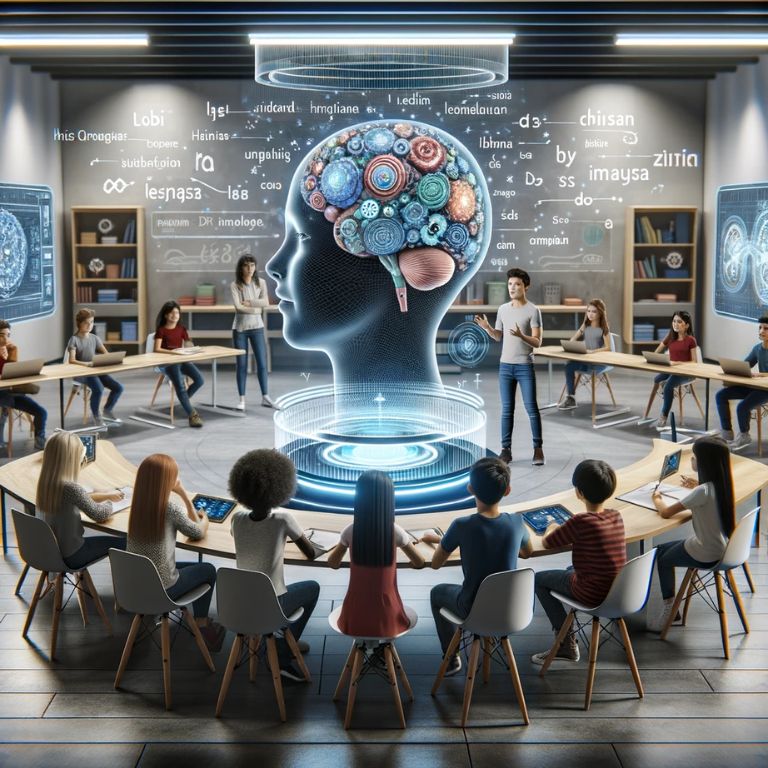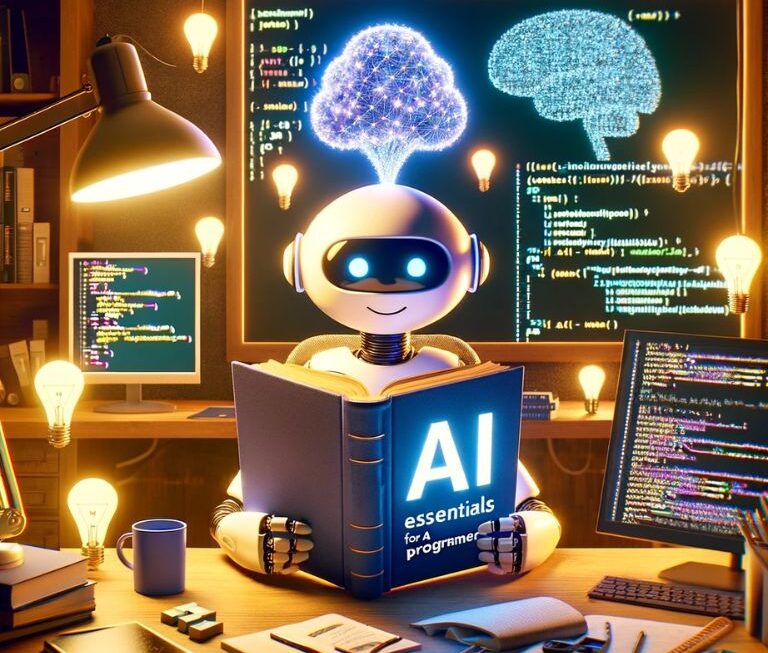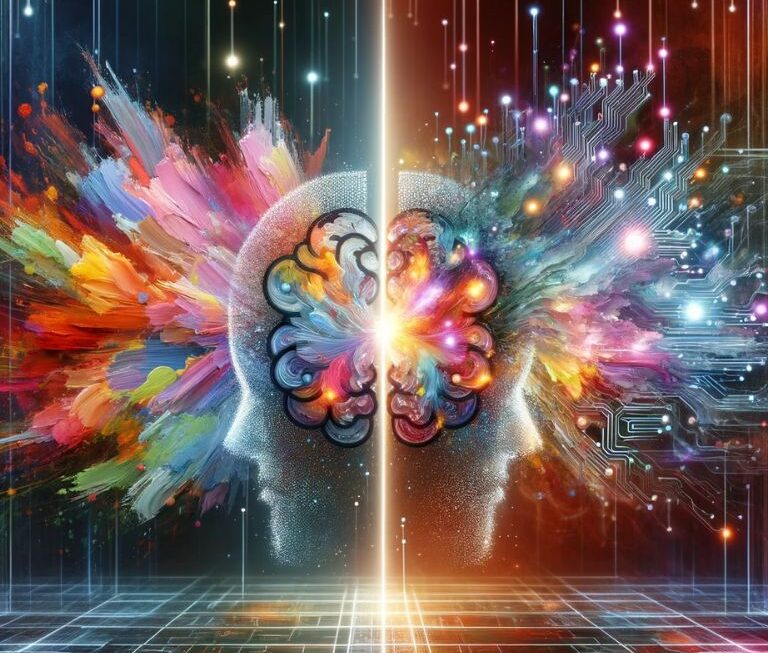The integration of Artificial Intelligence (AI) into the sphere of education has marked a revolutionary shift in the way we approach learning. This transformation is most evident in the field of language acquisition, where AI’s capabilities are not just augmenting but fundamentally altering the landscape of language learning tools and methodologies.
Overview of AI’s Integration into Educational Tools
AI has seamlessly infiltrated educational tools, ushering in an era of personalized learning. Empowered by advanced algorithms and machine learning, these tools discern individual learning patterns, preferences, and challenges, tailoring content and exercises in real-time. This level of customization, once a distant dream, is now a reality across various applications and platforms. From simple language learning apps to advanced Natural Language Processing (NLP) platforms, AI enables instant feedback, lifelike conversations, and proficiency in diverse accents and dialects, continuously enhancing learning strategies through data analysis.
Brief Mention of the Article’s Purpose: Examining the Role of Generative AI in Language Learning
This article delves into the intriguing role of generative AI in language learning, focusing on its ability to create interactive exercises, simulate conversations, and offer immersive experiences. It explores how this technology is reshaping language education, discussing its benefits, challenges, and future potential. By comprehending AI’s capabilities and limitations, educators, learners, and technologists can leverage its power for more effective and personalized language learning.
Understanding Generative AI: Basics and Beyond
The concept of generative AI has become a cornerstone in modern technology, especially in the realm of language learning. Understanding its fundamentals is key to grasping its potential and limitations.
Explanation of What Generative AI Is
Generative AI, a form of artificial intelligence, creates various content types like text, images, and speech. In language learning, it specializes in generating text and speech by learning from extensive datasets, producing original and valuable language learning materials such as sentences, dialogues, and conversations.
Distinction Between Generative AI and Other Forms of AI
Generative AI distinguishes itself from traditional AI by its capacity to generate novel content. Unlike analytical AI, which interprets existing data, generative AI not only understands language patterns but also creates entirely new language instances, revolutionizing educational content with dynamic and personalized learning experiences.
Personalization: The Core of AI-Driven Language Learning
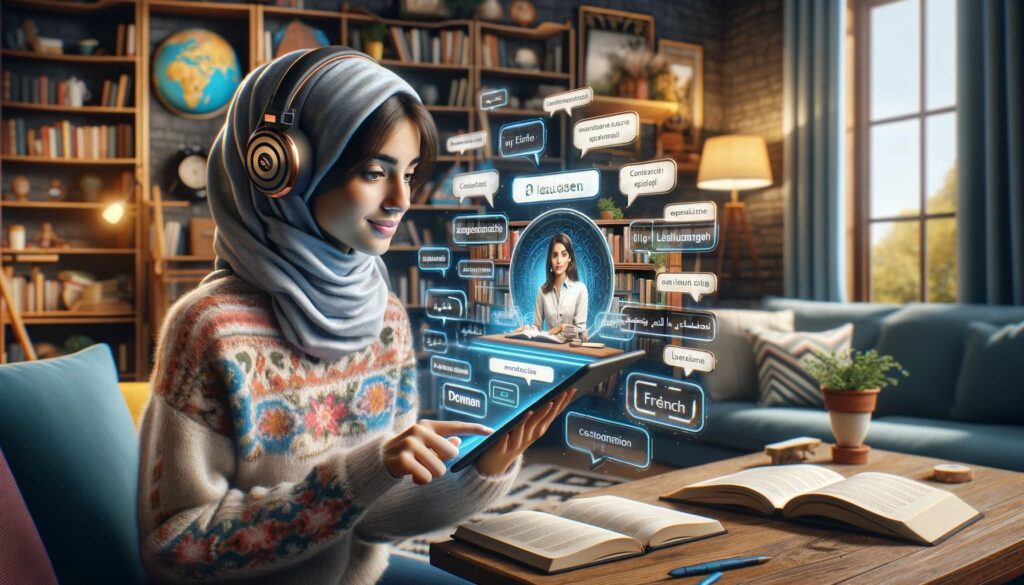
The power of generative AI in language learning significantly hinges on its ability to personalize the learning experience. This personalization is vital in catering to the unique needs, preferences, and learning styles of each user.
How Generative AI Tailors Learning Paths for Individual Users
- Adaptive Content: AI adjusts content based on user performance, from basic for beginners to complex for advanced learners.
- Learning Style Customization: Generative AI tailors material to match individual learning preferences (visual, auditory, kinesthetic), boosting effectiveness.
- Real-time Feedback: Provides immediate exercise feedback, correcting pronunciation, grammar, and usage errors.
- Interest-Aligned Learning: AI generates content aligned with users’ interests or profession, enhancing engagement and relevance.
Examples of Personalized Learning Experiences in Language Apps
In language learning apps, generative AI plays a crucial role in personalization. It tailors daily tasks, generates extra practice for weak areas, and adjusts task complexity as proficiency improves. AI also enhances conversation simulations, creating realistic dialogues matching proficiency, interests, and cultural nuances. This fosters interactive speaking and listening practice, mimicking diverse accents and scenarios for an immersive experience.
Interactive Learning Environments: A New Approach
The introduction of AI into language learning has not only personalized education but also revolutionized it by creating interactive and engaging learning environments. These environments extend beyond traditional learning methods, fostering a more active and immersive experience for learners.
The Role of AI in Creating Interactive and Engaging Learning Platforms
AI plays a pivotal role in transforming static learning materials into dynamic, interactive experiences. By leveraging the capabilities of AI, language learning platforms can now:
- Realistic Conversations: AI enables lifelike conversation simulations for speaking and listening practice, boosting real-world language usage skills.
- Interactive Exercises: AI-driven apps feature engaging games and activities that reinforce learning while making it enjoyable.
- Adaptive Assessments: AI offers assessments that adjust difficulty levels based on performance, ensuring an appropriately challenging experience.
Speech Recognition and Real-Time Feedback
Incorporating speech recognition into language learning tools represents a significant advancement, facilitating more effective and interactive learning experiences. This technology, combined with generative AI, is essential in providing immediate feedback, a critical component for language acquisition.
Importance of Speech Recognition in Language Learning
Speech recognition technology plays a crucial role in modern language learning platforms. It enables several key functionalities:
- Pronunciation Assessment: By accurately recognizing spoken words, the technology can assess a learner’s pronunciation, providing essential feedback to improve clarity and accuracy.
- Listening Comprehension: It aids in developing listening skills by transcribing spoken language in real-time, allowing learners to compare what they hear with the written text.
- Interactive Dialogue: Speech recognition allows for real-time interactive dialogues with AI tutors or chatbots, simulating natural conversation and aiding in the development of speaking skills.
- Accent and Dialect Training: Advanced speech recognition can distinguish between different accents and dialects, offering learners the opportunity to practice and understand various forms of the language.
How Generative AI Provides Immediate Feedback to Learners
Generative AI elevates the functionality of speech recognition by providing immediate and personalized feedback, which is vital for language learning. This immediate feedback loop works in several ways:
- Correcting Errors in Real-Time: As soon as a learner makes a pronunciation or grammatical error, the AI can identify it and provide corrections. This instant feedback is crucial for learning the correct usage and avoiding the reinforcement of errors.
- Adaptive Responses: Based on the learner’s input, generative AI can generate responses or follow-up questions, keeping the conversation flowing and relevant to the learner’s proficiency level.
- Customized Tips and Explanations: Beyond correcting errors, AI can provide tailored tips and explanations, helping learners understand the nuances of the language, such as idiomatic expressions or complex grammatical structures.
- Progress Tracking and Analysis: Generative AI can track a learner’s progress over time, offering insights into strengths and areas for improvement. This helps in customizing future learning materials and exercises.
Cultural Immersion Through AI: Bridging Gaps
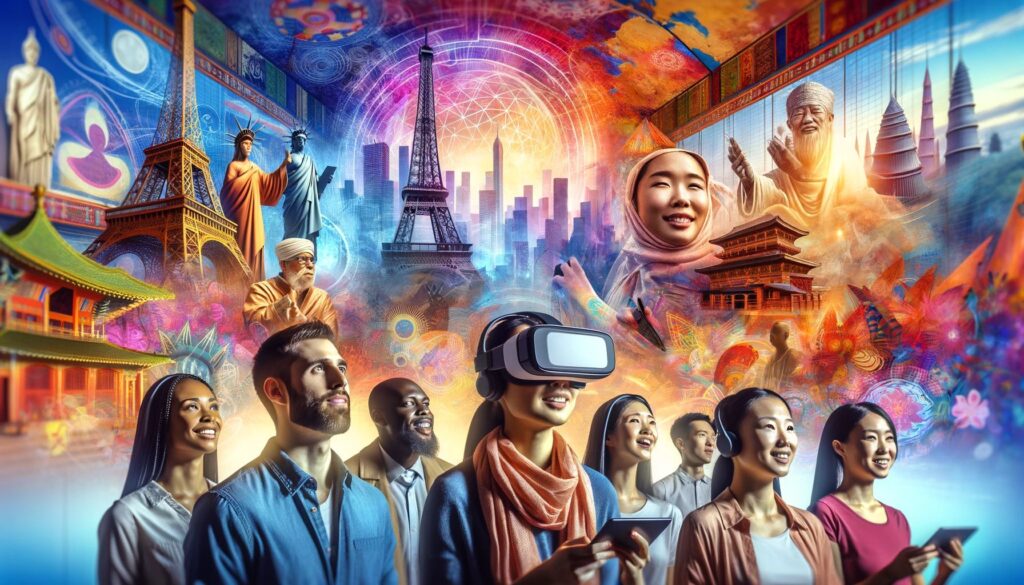
The advancement of AI in language learning extends beyond mere linguistic proficiency, delving into the realm of cultural immersion. AI’s capacity to provide cultural context and insights plays a pivotal role in creating a comprehensive language learning experience.
AI’s Role in Providing Cultural Context and Immersion
AI possesses a unique capability to infuse cultural learning into language education, a vital aspect for grasping the socio-cultural intricacies of a language. This integration encompasses contextualizing language usage by showcasing variations in expressions, idioms, and etiquette across different cultural contexts. It also involves introducing learners to cultural norms, practices, and traditions linked to the language, fostering an understanding and appreciation of diverse cultural perspectives. Through immersive simulations and interactive scenarios, AI enables learners to experience real-life situations where language is employed in various cultural settings, ranging from formal business meetings to casual social gatherings.
Examples of AI Tools Facilitating Cultural Understanding
Several AI tools have been developed to facilitate cultural understanding in language learning:
- VR Cultural Immersion: AI-driven VR immerses learners in culturally rich environments, enhancing understanding of both culture and language.
- Interactive Cultural Stories: AI-generated stories set in diverse cultural backgrounds help learners explore language within native cultural contexts.
- Cultural Competence Chatbots: Some AI chatbots not only aid in language practice but also educate users about cultural nuances, providing insights into references, social norms, and historical facts related to the language.
Challenges and Limitations: A Balanced View
While AI has significantly enhanced the landscape of language learning, it’s crucial to acknowledge the challenges and limitations that accompany its use. Understanding these aspects ensures a balanced and realistic view of AI’s role in this field.
Discussion of Potential Challenges and Limitations of AI in Language Learning
- Limited Human Replication: AI lacks the full nuances and emotional intelligence of human interaction, particularly in languages where cultural nuances and emotions matter.
- Biases from Data: AI can inherit biases in language and culture from its training data if it lacks diversity and inclusivity.
- Technology Over-Reliance: Learners risk excessive dependence on AI tools, potentially impeding independent and creative language use.
- Technical Constraints: AI may struggle with complex linguistic nuances and slang. Speech recognition accuracy can be challenging for less common languages or accents.
Ethical Considerations and Data Privacy Concerns
Ethical considerations are central to the integration of AI in language learning, with data ethics being a paramount concern. Responsible data collection and transparency are imperative, along with robust security measures to protect sensitive information from breaches. Equitable access is another challenge, as advanced AI tools may exacerbate educational disparities. Addressing these ethical and privacy concerns conscientiously during AI development and deployment is essential to prevent a digital divide in language education and ensure fair and responsible implementation.
Conclusion
The integration of AI into language learning signifies a transformative educational era, uniting technological efficiency with the complexities of human language. It offers personalization, interactivity, and cultural immersion benefits while posing ethical and privacy concerns. As AI continues to evolve, it holds the potential to revolutionize language acquisition, fostering global understanding. Responsible growth is paramount. The future of AI-driven language education promises inclusivity, effectiveness, and engagement, guided by personalization and immersive experiences. Navigating this transformation responsibly is essential to align with broader educational goals, marking a significant shift in language learning, teaching, and experiencing.

